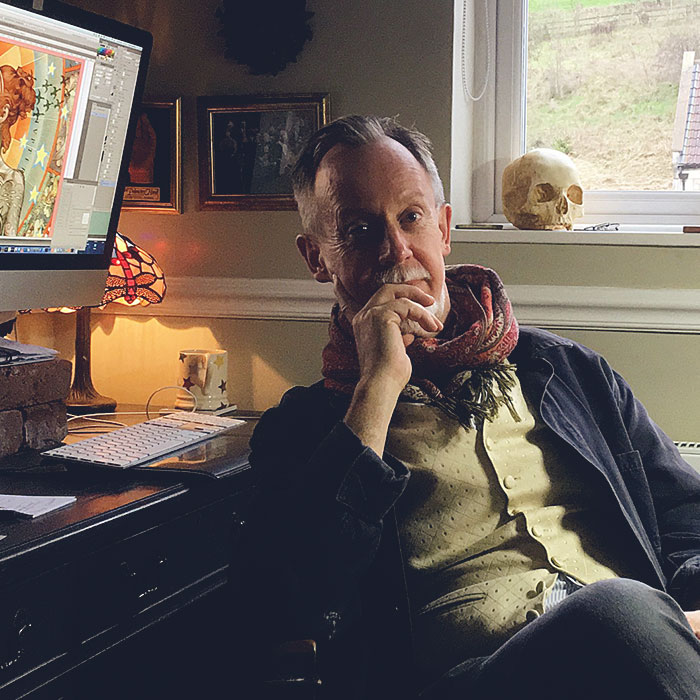Cardinal Thomas Wolsey originally built Hampton Court Palace, the home of the King’s Beasts.
Reclaimed, Restored, Remade
The cardinal’s grand home competed with the finest palaces and following Wolsey’s fall from grace, Henry VIII claimed the palace as his own. Imposing though it was, it had to be made fit for a king who was determined to leave his mark on history, resulting in a stone crossing, constructed with bricks and more than 600 tonnes of stone, replacing the wooden bridge that crossed the moat.
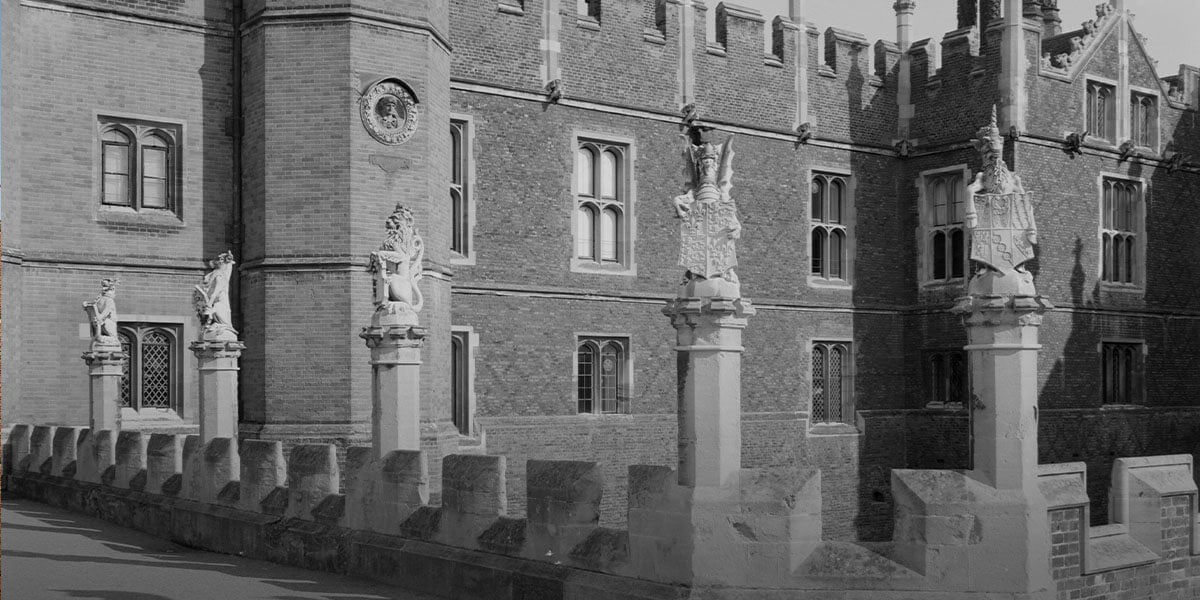
A Display of Tudor Might
Heraldry was important in displaying the strength and legitimacy of the Tudors. In heraldic art, the role of ‘beasts’ is generally to support a Coat of Arms, but in Tudor times they were used for many purposes, from holding weather vanes to ornamenting the private gardens of the monarch. The new Moat Bridge proudly displayed the lineage of Henry VIII through a group of stone statues called the King’s Beasts, designed to impress and perhaps intimidate those entering the court.
Although completed in 1536 during the king’s marriage to Jane Seymour, work on the bridge began when he was married to Anne Boleyn. The attention to heraldry with regard to the King’s Beasts sharply brings the focus onto the relative importance of Henry VIII’s wives. For example, when the king married Anne Boleyn, a leopard swiftly replaced the pomegranate badge of his first wife Katherine of Aragon. After a few alterations, the stone beast subsequently became the panther from Jane Seymour’s Coat of Arms during the king’s third marriage.
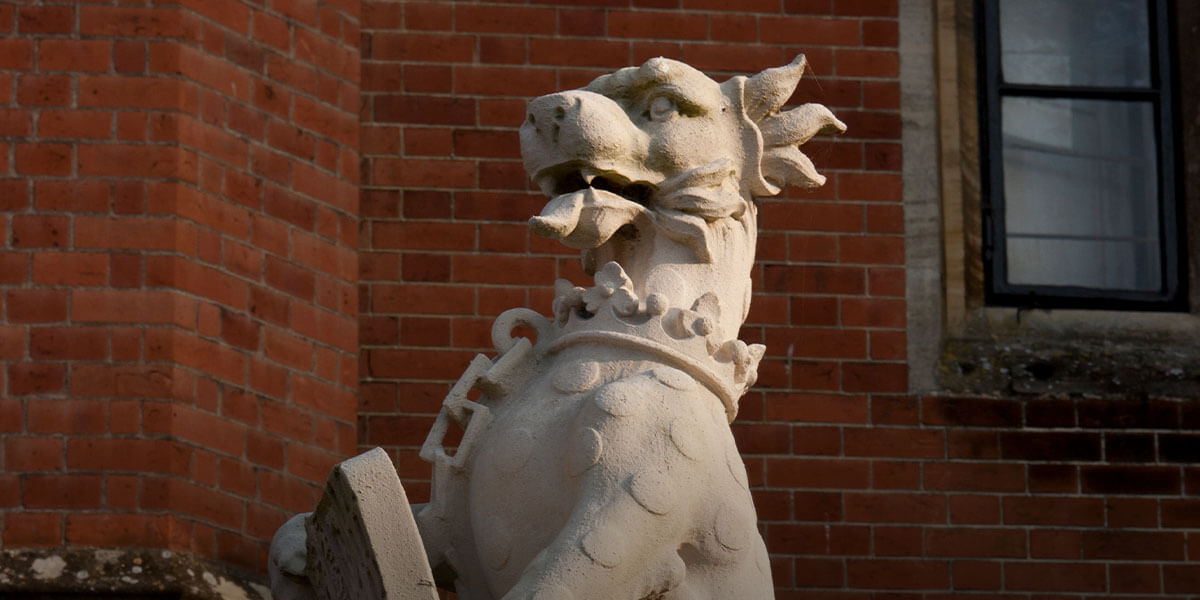
Lost to History
Over time, the rich heraldry of Henry VIII’s court fell out of fashion, with the Moat Bridge itself later sacrificed to accommodate carriages during William III and Mary II’s remodelling of the palace in the seventeenth century. Thrown down to help fill in the moat, Henry VIII’s powerful beasts remained hidden underground along with the remnants of the bridge for over 150 years.
In 1909, more than 30 years after a small section of the bridge was discovered during excavations, the reclamation of the Moat Bridge began. The beasts fared worse than the bridge itself; the bridge was in good condition, whilst only fragments of the beasts were found. Fortunately, these were enough for scholars to gauge the size and style of the statues, as it was determined that the new statues should be worthy successors of Henry VIII’s originals.
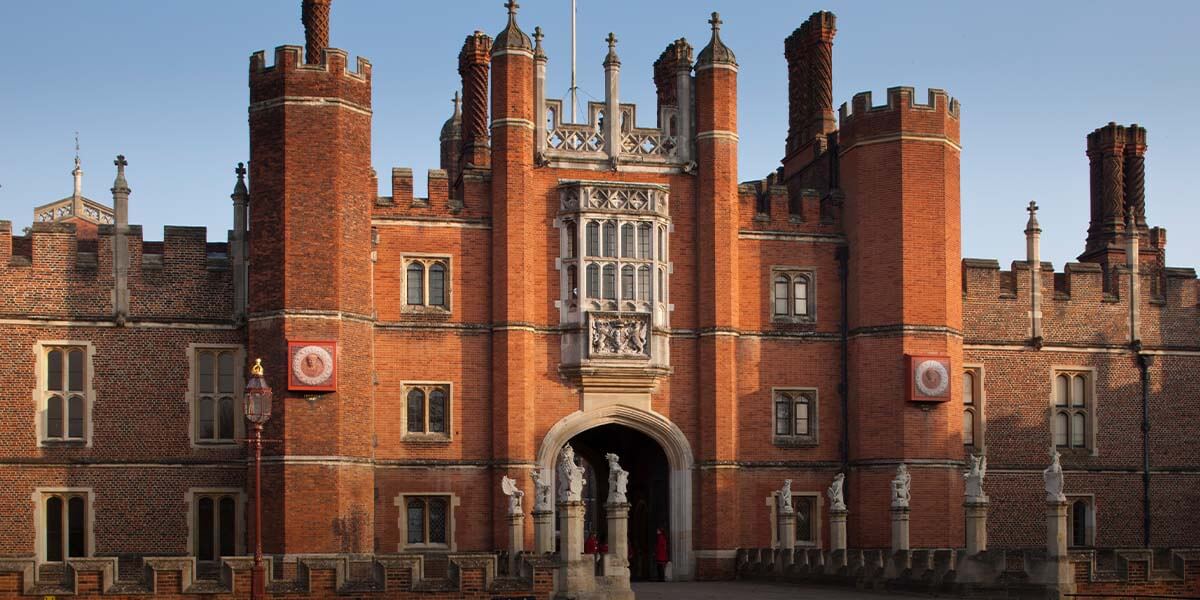
A Work of Art and Love
Designed by Reverend E. E. Dorling, the new King’s Beasts statues were modelled at Messrs. Farmer & Brindley’s studios in London by craftsman George Wilson. Wilson’s genuine love of heraldry and appreciation of the decorative style made the new stone beasts a true work of art. The new beasts, like the originals, held heraldic shields and their designs were carefully considered. Unfortunately, the original stone did not weather well, resulting in replicas being made in the 1950s, which continue to guard the entrance to Hampton Court Palace to this day.
Just as the original bridge and its beasts were reclaimed, restored and remade over centuries, The Royal Mint’s Royal Tudor Beasts Collection has reimagined these mighty and mythical creatures for a new age. Collection artist David Lawrence took his inspiration from the statues, but chose not to recreate them, opting for a balance of heraldic style with the dynamism of the animals themselves and allowing the shields, which he describes as ‘… beautifully designed and elegantly elaborate,’ to remain unchanged, simply adjusting the perspective.
David Lawrence works entirely by hand, perfecting his designs using his trusty propelling pencils. The latest coin in the collection features the Bull of Clarence, one of the beasts that the artist sketched from the original to help define the style he would adopt for each of the King’s Beasts.
Related articles
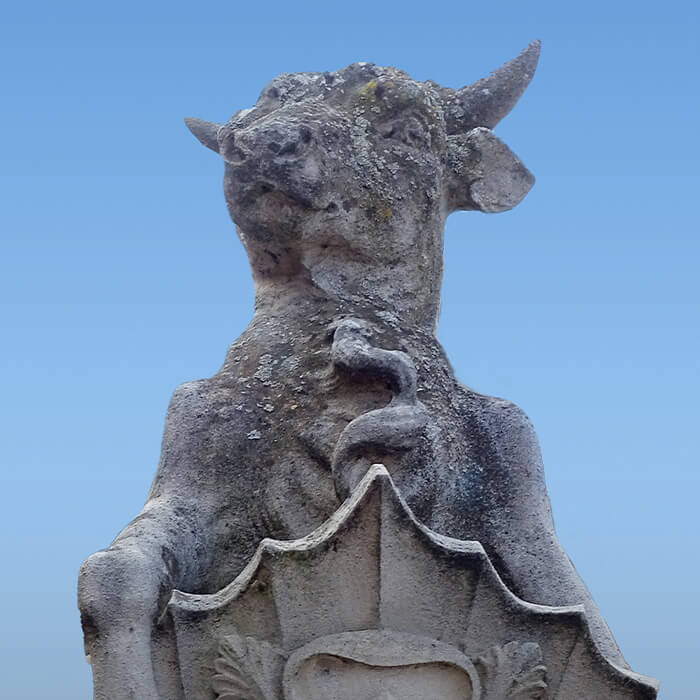
THE BULL OF CLARENCE
A Powerful Symbol
© Historic Royal Palaces 2024 Produced under licence from Historic Royal Palaces Enterprises Limited

